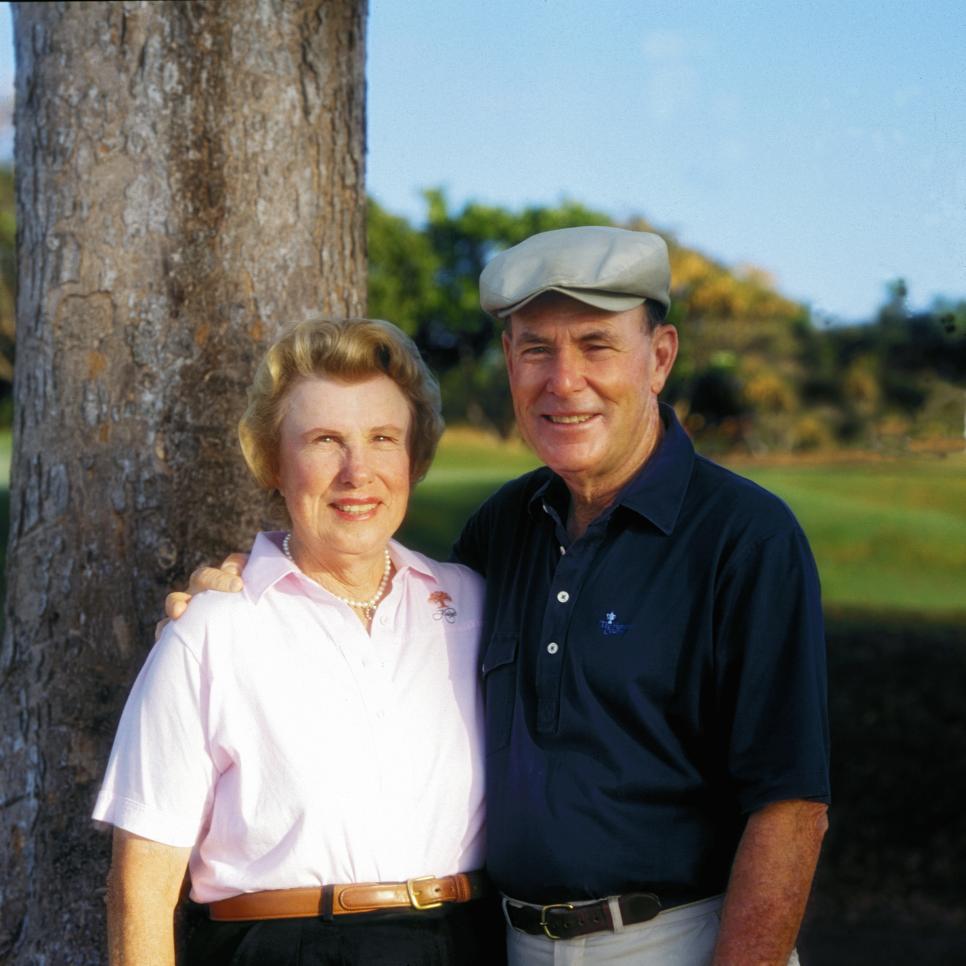News
Remembering Alice Dye, Pete's better half in more ways than one

My friend Alice Dye died on Feb. 1, less than three weeks short of her 92nd birthday, a death I’m taking hard because I know how much she loved her husband, Pete Dye, the Hall of Fame golf architect now battling dementia, and because I fear her departure will somehow hasten his.
Alice and Pete were a couple for the ages. Alice was Bacall to Pete’s Bogart, Hepburn to his Tracy, Nancy to his Ronald, Ethel to his Fred.
It’s no insult to Pete Dye to say that Alice was literally his better half. She was the more successful competitive golfer, with a supple swing well past parallel later rivaled only by John Daly. She was a Curtis Cupper at age 43, for crying out loud.
She was a better politician than Pete when it came to dealing with owners and regulators, more polished in presentations and communications. As a golf architect, she was the more knowledgeable of the two, teaching Pete how to read contour maps and handling most of his drawings. In the field, she edited Pete’s designs expertly, making them easier for mortals to play and tougher for the one percent who dread counting strokes for a living on Pete Dye designs.
Alice was in charge of their family, of their business, of their image, their reputation and massive influence on the game of golf.
She won a ton of awards, both as a player and a course designer, yet she remained surprisingly humble, always promoting Pete with her fierce allegiance and chiding the press for any negative coverage of her sons, Perry, now 66, and P.B., now 63, both golf architects of grand success who’ve never approached the popularity of their parents.
In the 1990s, I asked Alice if she’d ever wanted to design a golf course by herself, start to finish. “I’ve already done that,” she said, pointing to Heather Hills in Indianapolis (now Maple Creek Golf & Country Club), billed as Pete’s first 18-hole design. She took the lead on that project while Pete was off chasing work in Michigan, Iowa, Nebraska and elsewhere. She handled the routing, negotiated with government officials, prodded lenders, supervised construction and deferred to Pete only in the contouring of its greens. Her involvement was fairly well covered by the Indiana press in 1961, where she was invariably identified as Mrs. Paul Dye, Jr. Such was the fate of a rare female golf architect in those days.

daverust@mac.com
In 1983, Alice was accepted as the first female member of the American Society of Golf Course Architects, over the backroom grumbling of a few intransigent fuddy-duds. In 1997, when she was elected the first female president of the Society, Pete, who’d served his one-year term as ASGCA president in 1988, stood up and shouted, “You know, this is the second time she’s done this.”

I still remember her acceptance speech that night. “Imagine the best day of travel you’ve ever experienced,” she told the audience of members. “You get to the airport in plenty of time, find a parking place right up front, a skycap takes your bags without asking, your plane is leaving from the closest gate and the flight is on time. You get to your seat and find no one seated next to you. The flight attendant offers you a free drink and plenty of magazines. The weather is clear. The plane taxis out to the runway, the captain’s voice comes on the intercom … and it’s a woman.”
These days, her punchline would merit a shrug, but back in 1997, it drew a roomful of laughs, so foreign was the concept of a woman in charge.
Alice Dye was always in charge, from the day she told Pete it was time to get married to the many times she walked a construction site with Pete and told him he was doing it all wrong. Alice was in charge of their family, of their business, of their image, their reputation and massive influence on the game of golf. If you consider Pete Dye a genius, as I do, then you absolutely must concur that Alice Dye was the genius behind the genius.
I appreciate the many times Alice treated me like one of the family, even though it was never deserved. I cherish the small handwritten notes, both of encouragement and admonishment, that she sent me over the years. I’m especially grateful that she allowed me to interview her one last time this past August, despite the fact that she was confined to a wheelchair and in visible pain. Alice was a class act. Alice was a dear friend.
Top image photo credit: Ken May/Rolling Greens Photography